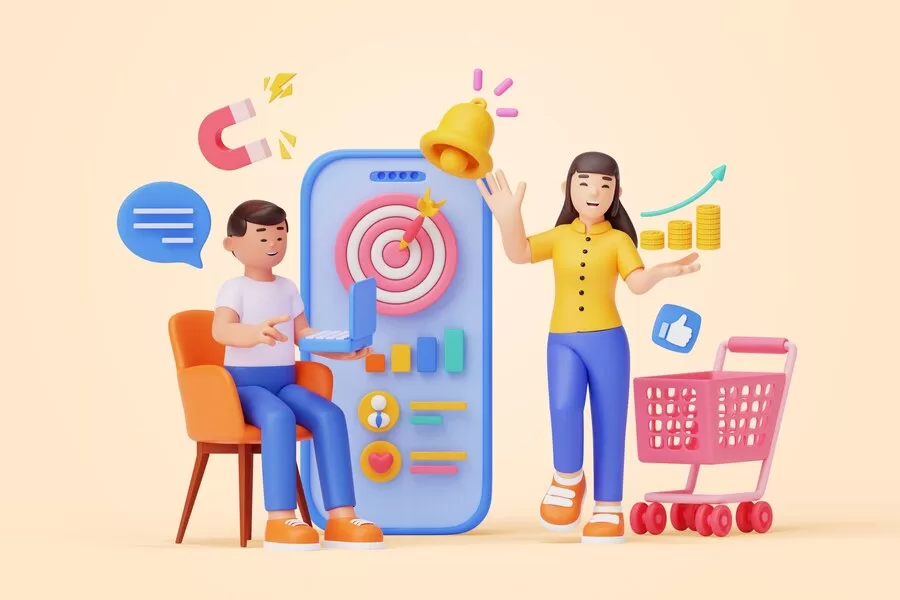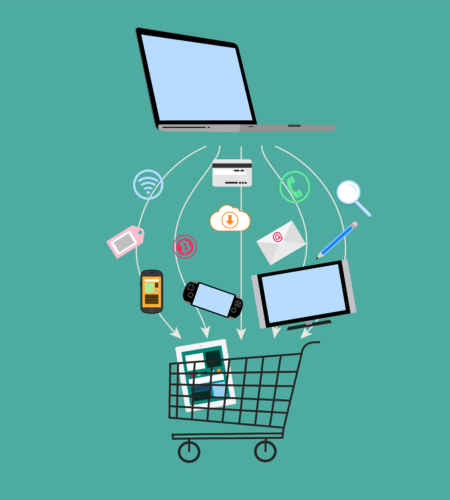Successful brands in e-commerce do not just focus on building strategies but on giving a better experience for their users by interacting with them and getting to know what they want. Initially, e-commerce platforms just had their products/services displayed on their website with no additional features but now we have each of the businesses getting better in their interactions and customer experiences making them stand out from their competitors. The better the customer experience merrier is for business.
Now, this is where Omnichannel Ecommerce comes into place.
What is Omnichannel Ecommerce?
Omnichannel Ecommerce is an e-commerce sales approach that uses multiple channels and gives customers a unified experience across all channels, whether it’s from in-store or other digital channels. This channel provides the ability to:
· Utilize any channel to access current customer information.
· Automated connections can be made with customers through any channel.
· Utilize CRM data to provide tailored customer experiences across all channels.
How do you implement this Omnichannel Ecommerce strategy in your e-commerce business?
Presenting you with 3 proven Strategies that will help you in developing an omnichannel Ecommerce experience for your customer.
1. Construct your website into Mobile – A friendly application.
This is advised to be done is because to give every consumer a seamless and hassle-free experience to shop online. Surveys observe that 70% of them use mobile to shop from and the other 30% use other devices or shop from a retail store. Make your eCommerce websites mobile-friendly and enhanced to make it work simpler for clients to explore, see, subscribe to your email, and eventually purchase your items. Optimizing your page headline, and description, and adopting personalization would also add value to the customers. Overall, you need to make your website look easily accessible and make it look attractive to consumers.
2. Set a seal on customers’ data
Most people with a fear of having their data leaked out or due to some technical glitches, don’t prefer to buy online, to solve their issue Omnichannel Ecommerce platforms play a huge role, whereby making the work safer. Information such as their address, email address, and phone number can be misused, so make sure you keep them safe. As customers have trusted and given the details, you must never let them down.

To demonstrate to your consumers that their data is kept safe and confidential, you may add an SSL certificate to your website. Also, to safeguard your data and control user access, always utilize a VPN provider like NordVPN.
3. Uplift Instagram engagement.
If you use social media networks correctly, they may increase your online exposure and brand recognition. Your clients will be able to discover more about your company and brand after you broaden the reach of your social media accounts. Start by developing your brand on social media. Create a detailed profile on websites for social media like Facebook and Instagram. Customers gain more knowledge about your company when they communicate with you on social media. Also, you receive feedback from your clients and the knowledge you require to advance your company.
You give your customers a fresh perspective on your company every time you reply to their comments on Facebook and other social media platforms. Customers are more likely to be long-term brand loyalists when you establish a relationship with them. You require that to maintain optimum sales.
Omnichannel Ecommerce Vs Multichannel Ecommerce
You might say now what multichannel?
Multichannel marketing combines customer experiences and provides customers the option to interact on the channel of their choosing. Although it is adaptable, companies must follow the channel’s rules of conduct.
Multichannel marketing may be compared to a wheel with spokes. Your product is in the middle of the wheel (i.e., a sale). Your clients are located on the outside rim of the wheel, where each channel provides a distinct and independent chance to make a purchase. Once it’s obvious which channels most appeal to your target demographic, you can focus your marketing efforts there to increase sales.
As you know now, what multichannel is, do you think is there any difference between them?
The answer to this would be yes, but how? Here is the twist!
The primary distinction between omnichannel and multichannel is that the former uses all channels and is focused on your customers, while the latter uses a variety of channels and is focused on your products. Multichannel marketing appears to be the “old way”. It presumes a one-to-one interaction, whereas omnichannel Ecommerce marketing is the “new way” because it allows for personalization and centers the user at the center of the experience.
In general, I’ve discovered that choosing a more tailored approach is better in terms of impact and cutting through the noise, which distinguishes omnichannel marketing as a leading strategy. Multichannel marketing nonetheless offers advantages if omnichannel marketing is not something you can afford to engage in.
An Example of an Omnichannel Ecommerce strategy to prove its capabilities.
PayPal Happy Returns
In a recent step that improves its connection with the retail sector, PayPal increased access to Happy Returns, the returns service it purchased last year, by making it freely available to PayPal Checkout businesses. Customers are relieved of the bother of accessing a different website or app to use the return service thanks to PayPal’s omnichannel solution.
Instead, consumers receive a QR code from the retailer’s website to start their return trip, which they may use to bring the item and the code to the closest Return Bar outlet. Even without packaging, a box, or a label, they may nevertheless carry the object. After the consumers’ QR code is read, they are given a refund in real-time. PayPal has also teamed up with Ulta Beauty to expand Return Bars to over 1,300 stores throughout the US to make sure that its consumers will have incredibly simple access to the return locations.
Conclusion
To conclude we can say that the most effective omnichannel marketing campaign enables you to provide clients with a seamless experience both offline and online as well. Omnichannel marketing also aids in brand development and long–term client loyalty. Brands construct their stacks and a core set of microservices using the omnichannel Ecommerce strategy. This gives businesses better control over the cost of their stack while also enabling them to satisfy their scalability and flexibility.
It may sound sophisticated and simple to implement omnichannel Ecommerce marketing, but if you aren’t totally dedicated to shifting the whole emphasis of your company to your customers, it will be a lost cause. The experience your clients have with your business should be as smooth as possible, providing them with actual answers rather than random stuff, is what you need to keep in mind. To produce a smooth customer experience that is unaffected by dull messaging and unhelpful customer care agents, you must restructure your inter- and intra-departmental operations.
To learn more about ecommerce related information you can subscribe to the website and share your valuable comments in the comment box- Firsthub Blogs.

